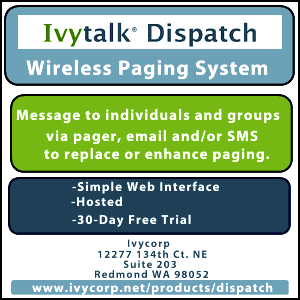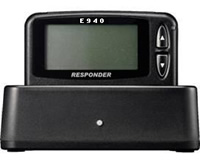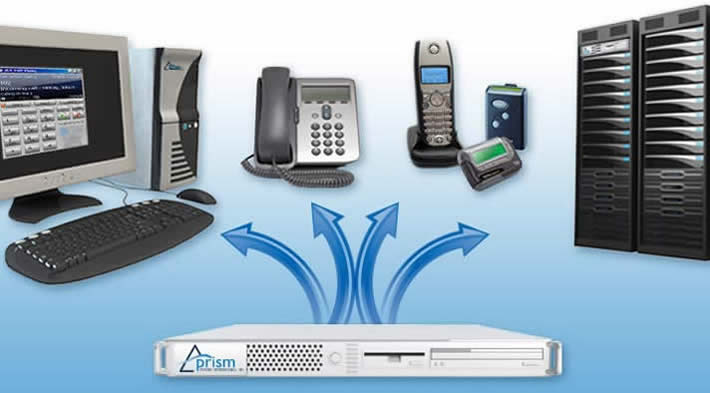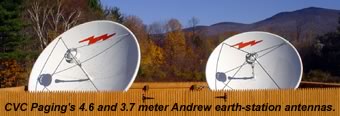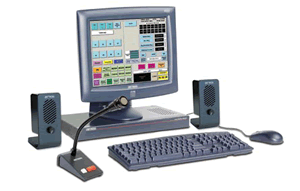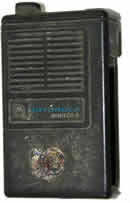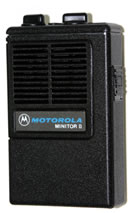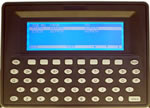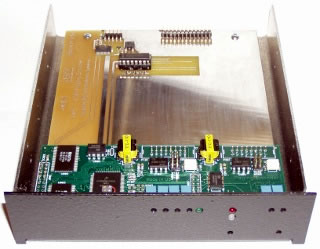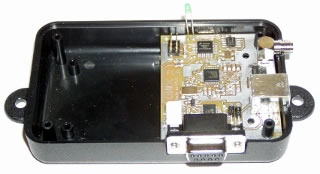BloostonLaw Telecom Update Published by the Law Offices of Blooston, Mordkofsky, Dickens, Duffy & Prendergast, LLP [Portions reproduced here with the firm's permission.] www.bloostonlaw.com |
| Vol. 14, No. 4 | January 26, 2011 |
 FCC ENFORCEMENT ADVISORY
CPNI Annual Certifications Due March 1 The FCC has slightly modified the format for the annual CPNI certification. Carriers should use the modified format and should update the reported information (as necessary), for their “Annual Certification of CPNI Compliance” for 2010. The certification must be filed with the FCC by March 1, 2011. Clients can contact Gerry Duffy by e-mail to request and obtain information on the revised CPNI certification format (gjd@bloostonlaw.com). Note that the annual certification should include the following three required Exhibits: (a) a detailed Statement Explaining How The Company’s Operating Procedures Ensure Compliance With The FCC’S CPNI Rules to reflect the Company’s policies and information; (b) a Statement of Actions Taken Against Data Brokers; and (c) a Summary of Customer Complaints Regarding Unauthorized Release of CPNI. A company officer with personal knowledge that the company has established operating procedures adequate to ensure compliance with the rules must execute the Certification, place a copy of the Certification and accompanying Exhibits in the Company’s CPNI Compliance Records, and file the certification with the FCC in the correct fashion. Our clients can forward the original to BloostonLaw in time for the firm to make the filing with the FCC by March 1, if desired. BloostonLaw is prepared to help our clients meet this requirement, by assist-ing with preparation of their certification filing; reviewing the filing to make sure that the required showings are made; filing the certification with the FCC, and obtaining a proof-of-filing copy for your records. Clients interested in obtaining BloostonLaw's CPNI compliance manual should contact Gerry Duffy (202-828-5528) or Mary Sisak (202-828-5554). Note: If you file the CPNI certification, you must also file the FCC Form 499-A Telecom Report-ing Worksheet by April 1. |

REMINDER: Today, February 2, is the deadline for small carriers to implement “one business day” number porting.

INSIDE THIS ISSUE - FCC responds to appeals of “Net Neutrality Order by Verizon, MetroPCS.
- Connect America Fund, Intercarrier Comp. top Feb. 8 open meeting agenda.
- Comment
cycle set for NPRM regarding use of TV broadcast spectrum for wireless
broadband.
- Comment sought on NECA’s average schedule formulas for interstate settlements.
|
FCC Responds To Appeals Of “Net Neutrality Order” By Verizon, MetroPCS The FCC has asked the U.S. Court of Appeals for the District of Columbia Circuit to dismiss the appeals of its Net Neutrality Order (or Open Internet Order) filed by Verizon and MetroPCS as “fatally premature.” As we reported last week, Verizon and MetroPCS filed their Notices of Appeal in advance of publication of the Net Neutrality Order in the Federal Register. The carriers did not challenge the new rules directly; rather they asserted that the FCC Order unlawfully changes the terms of their existing wireless licenses (BloostonLaw Telecom Update, January 26). The FCC filed virtually identical Motions to Dismiss against both Verizon and MetroPCS. While the FCC v. Verizon/MetroPCS argument does not go to the merits of the Net Neutrality rules, but rather focuses on technical and procedural matters, it is instructive because it raises issues about public notice and Federal Register dates. Further, Verizon did state that “in an abundance of caution,” it would file another Notice of Appeal after publication of the Order in the Federal Register. In its Motion against Verizon, the Commission said that review of FCC orders is generally vested in the appeals courts pursuant to the Hobbs Act. If petitions for review of an FCC order are filed in multiple courts of appeals within 10 days after the order is entered, the cases are assigned to a single court through the judicial lottery procedure. As an exception to that general rule, a limited set of FCC decisions, including those denying or modifying FCC licenses, are reviewable exclusively in the D.C. Circuit by the filing of a Notice of Appeal under 47 U.S.C. Section 402(b). The FCC said that Sections 402(a) and 402(b) are mutually exclusive; if the Court has jurisdiction over a party’s claim under Section 402(a), it cannot have jurisdiction under Section 402(b), and vice versa. According to the Commission, Verizon has filed a Notice of Appeal in advance of the Open Internet Order’s publication in the Federal Register. The Notice of Appeal asserts both that the time to seek judicial review of the Or-der began on its release and that the D.C. Circuit has exclusive jurisdiction to review the Order under Section 402(b). If the Court accepts Verizon’s assertion and challenges are filed in other circuits, either the Order would be subject to review simultaneously in multiple courts, or all other potential litigants would be required to accede to Verizon’s selection of a forum for judicial review of the industry-wide rules, the FCC said. THE FCC’s ARGUMENT The FCC asserted that the Court should dismiss Verizon’s Notice of Appeal because it was filed prior to publication of the Open Internet Order in the Federal Register and is thus jurisdictionally barred. The Commission argued that Congress established in Section 405(a) that the time for either filing a petition for review under Section 402(a) or taking an appeal under Section 402(b) “shall be computed from the date upon which the Com-mission gives public notice of the order, decision, report, or action complained of.” “Public notice” of an order and its “entry” are one and the same because “[e]ntry of the agency order occurs on the date the Commission gives public notice of the order” under its own rules. FCC Rule 1.4(b)(1) defines “public notice” to mean “the date of publication in the Federal Register.” The filing window for challenging the Open Internet Order therefore does not open until the Order is published in the Federal Register. Put differently, an appeal filed prior to Federal Register publication of the challenged order is “incurably premature,” the FCC said. (Keep in mind that Verizon does plan to file a “protective” Notice of Appeal following publication of the Order in the Federal Register.) Verizon argues that the Open Internet Order modifies Verizon’s wireless licenses, and therefore the public notice date is the date that the Order was released, rather than the later Federal Register publication date. Separately, the FCC has filed a Motion to Defer Consideration of Verizon’s Motion for Panel Assignment and to Defer Filing of the Record. In that filing, the FCC asks that, in the interests of efficiency and conservation of re-sources, the Court defer consideration of Verizon’s motion until it is clear whether the case will be heard in the D.C. Circuit. If the Court dismisses this case, for example, any resources expended on the case will have been wasted. For the same reason, even if the Court does not dismiss, given the possibility of a forum-selection lottery and possibly additional litigation concerning the proper venue for this case in the event that petitions for review of the Open Internet Order are filed by other parties, it is the prudent course to defer a response to Verizon’s panel motion until it is clear whether the case will be heard in DC, the FCC said. Clearly this is a complicated legal issue, but it is clear that the Open Internet Order will undergo vigorous judicial review either way. The Court’s rulings on the above procedural challenges may help clarify FCC rules regarding the filing of judicial appeals. BloostonLaw contacts: Ben Dickens, Gerry Duffy, and Mary Sisak. CONNECT AMERICA FUND, INTERCARRIER COMP. TOP FEB. 8 OPEN MEETING AGENDA: At its February 8 open meeting, the FCC is set to consider a Notice of Proposed Rulemaking (NPRM) to get broadband to all of rural America and spur investment and job creation, by modernizing the Universal Service Fund and intercarrier compensation (ICC) system while cutting waste and inefficiency. Through the use of market-driven, incentive-based policies and increased accountability, the NPRM proposes near-term support for broadband deployment in unserved areas and measures to address ICC arbitrage, as well as a long-term transition from current high-cost support and ICC mechanisms to a single, fiscally responsible Connect America Fund. The Commission will also consider an NPRM, initiated as part of its Data Innovation Initiative, to streamline and modernize the collection of broadband deployment data via Form 477, in order to ensure that the data the Com-mission collects enables informed policymaking while minimizing burdens on voice and broadband service providers. Finally, the FCC will consider an NPRM initiated as part of the Commission’s Data Innovation Initiative, to eliminate the legacy narrowband comparably efficient interconnection (CEI) and open network architecture (ONA) reporting requirements that currently apply to the Bell Operating Companies (BOCs), due to a lack of continuing relevance and utility. The meeting will also include a presentation on the status of the comprehensive reform efforts to improve the agency’s fact-based, data-driven decision making. BloostonLaw contacts: Hal Mordkofsky, Ben Dickens, Gerry Duffy, and John Prendergast. COMMENT CYCLE SET FOR NPRM REGARDING USE OF TV BROADCAST SPECTRUM FOR WIRELESS BROADBAND: The FCC has set a comment cycle for its Notice of Proposed Rulemaking (NPRM) to address the growing demand for wireless broadband services, spur ongoing innovation and investment in mobile and ensure that America keeps pace with the global wireless revolution, by making a significant amount of new spectrum available for broadband (BloostonLaw Telecom Up-date, December 1, 2010). Through the NPRM, the Commission is taking preliminary steps to enable the repurposing of a portion of the UHF and VHF frequency bands that are currently used by the broadcast television ser-vice. The FCC expects that in later rulemaking stages it will make this spectrum available for flexible use by fixed and mobile wireless communications services, including mobile broadband. At the same time, the Commission recognizes that over-the-air TV serves important public interests, and its approach will help preserve this service as a healthy, viable medium. Comments in this ET Docket No. 10-235 proceeding are due March 18, and replies are due April 18. The FCC said the approach it is proposing is consistent with the goal set forth in the National Broadband Plan to repurpose up to 120 mega-hertz from the broadcast television bands for new wire-less broadband uses through, in part, voluntary contributions of spectrum to an “incentive” auction. The specific bands under consideration are the low VHF spectrum at 54-72 MHz (TV channels 2-4) and 76-88 MHz (TV channels 5 and 6), the high VHF spectrum at 174-216 MHz (TV channels 7-13), and the UHF bands at 470-608 MHz (TV channels 14-36) and 614-698 MHz (TV channels 38-51); (All of this spectrum is referred to as the “U/V Bands”). The FCC proposes three actions that will establish the underlying regulatory framework to facilitate wireless broadband uses of the U/V Bands, while maintaining current license assignments in the band. First, the Commission proposes to add new allocations for fixed and mobile services in the U/V Bands to be “co-primary” with the existing broadcast-ing allocation in those bands (i.e., entitled to the same level of interference protection). The additional allocations would allow the FCC to assign portions of the U/V Bands for new mobile broadband services in the future. The Commission also proposes to establish a framework that, for the first time, permits two or more television stations to share a single six-megahertz channel, thereby fostering efficient use of the U/V Bands. Third, the Com-mission intends to consider approaches to improve ser-vice for television viewers and create additional value for broadcasters by increasing the utility of the VHF bands for the operation of television services. BloostonLaw contacts: Hal Mordkofsky, John Prendergast, and Cary Mitchell. COMMENTS SOUGHT ON NECA’s AVERAGE SCHEDULE FORMULAS FOR INTERSTATE SETTLEMENTS: On December 23, 2010, the National Exchange Carrier Association, Inc. (NECA) filed with the Commission its proposed modification of average schedule formulas for interstate settlements, pursuant to section 69.606 of the Commission’s rules. NECA proposes to revise the formulas for average schedule interstate settlement disbursements in connection with the provision of interstate access services for the period beginning July 1, 2011, through June 30, 2012. Modifications to the aver-age schedule formulas are based on a statistical sampling of the costs and demand of comparable cost companies. NECA indicates that the factors driving this proposal include increased account growth, and significant reductions in some access demand elements. NECA proposes to continue to limit access minute volumes and line haul circuit counts eligible for average schedule settlements. NECA estimates that under the proposed formula changes the majority of carriers would receive an increase in settlements, averaging 2.5 percent, given constant demand. The effects of these formula changes on individual average schedule companies will vary de-pending on each company’s size and demand characteristics. Comments in this WC Docket No. 10-251 proceeding are due February 15, and replies are due February 25. BloostonLaw contacts: Ben Dickens, Gerry Duffy, and Mary Sisak. COMMENTS SOUGHT ON NECA’s COST ALLOCATION MANUAL REVISIONS: The FCC has received a revised cost allocation manual (CAM) from the National Exchange Carrier Association, Inc. (NECA). The revisions reflect changes that occurred during 2010. Specifically, changes were made to Section I: Introduction, Section II: Non-regulated Activities, Section VI: Cost Allocation Tables, and Section VII: Time Reporting Procedures. The Section I and Section VI changes included the elimination of certain accounts and the Responsibility Center. These changes were made to improve reporting accountability. The Section II changes eliminated services provided by NECA to Sol ix, Inc. The changes to Section VII include the elimination of two work groups, specifically the VP-IR East Work Group and the Solix Work Group. Comments on this WCB/Pricing File No. 11-03 proceeding are due February 24, and replies are due March 10. BloostonLaw contacts: Ben Dickens, Gerry Duffy, and Mary Sisak. FCC CONDITIONALLY DESIGNATES TV BAND DA-TABASE ADMINISTRATORS: The FCC has condition-ally designated nine entities—Comsearch, Frequency Finder Inc., Google Inc., KB Enterprises LLC and LS Tel-com, Key Bridge Global LLC, Neustar Inc., Spectrum Bridge Inc., Telcordia Technologies, and WSdb LLC—as TV bands device database administrators. The TV bands databases will be used by fixed and personal portable unlicensed devices to identify unused channels that are available at their geographic locations. This action will allow the designated administrators to develop the data-bases that are necessary to enable the introduction of this new class of broadband wireless devices in the TV spectrum. The conditions imposed by the FCC are as follows: - Each of the designated database administrators must supplement its previous filings with sufficient detailed information to indicate how it will comply with the rule changes adopted by the FCC for TV band devices. Amendments to proposals must be received by February 28, 2011. Any of the database administrators that filed separate proposals and now wish to consolidate their operations must submit an updated propos-al by this same date. Any database administrators that wish to withdraw their proposals must notify the Commission by this same date.
- All database administrators must attend work-shops to be conducted by OET to address the operation of the databases to ensure consistency and compliance with the rules and the database trials.
- Each administrator shall designate a responsible party who will represent its organization at the workshops and also ensure compliance with all of the conditions herein by February 28, 2011. The first workshop is scheduled for March 10, 2011 at the Commission’s Laboratory in Columbia, Maryland.
- Each database administrator must cooperate with any steps OET deems necessary to ensure compliance with the rules, including for example security features.
- Database administrators must agree that they will not use their capacity as a database manager to engage in any discriminatory or anti-competitive practices or any practices that may compromise the privacy of users.
BloostonLaw contacts: Hal Mordkofsky, John Prendergast, and Richard Rubino. FCC SETS COMMENT DATES FOR PROPOSED RE-VISIONS TO CORES: The FCC has set comment dates on its proposed revisions to the Commission's Registration System (CORES), which is used by individuals and entities doing business with the Commission to obtain a unique identifying number called an FCC Registration Number (FRN). The proposed modifications to CORES include: Requiring entities and individuals to rely primarily upon a single FRN that may, at their discretion, be linked to subsidiary or associated accounts; allowing entities to identify multiple points of contact; eliminating some of our exceptions to the requirement that entities and individuals provide their Taxpayer Identification Number (TIN) at the time of registration; requiring FRN holders to provide their e-mail addresses; modifying CORES log-in procedures; adding attention flags and automated notices that would inform FRN holders of their financial standing be-fore the Commission; and adding data fields to enable FRN holders to indicate their tax-exempt status and notify the Commission of pending bankruptcy proceedings. These modifications, if implemented, are intended to make CORES more feature-friendly and improve the Commission's ability to comply with various statutes that govern debt collection and the collection of personal in-formation by the Federal government. Comments in this MD Docket No. 10-234 proceeding are due March 3, and replies are due March 18. BloostonLaw contacts: Hal Mordkofsky, John Prendergast, and Richard Rubino. VODAFONE, FRANCE TELECOM RESTORE CELL PHONE SERVICE TO EGYPT: Amid the widespread protests in Egypt, cell phone service had been shut down at the request of the Egyptian government. Vodafone said in a January 29 statement: “Vodafone restored voice services to our customers in Egypt this morning, as soon as we were able. We would like to make it clear that the authorities in Egypt have the technical capability to close our network, and if they had done so it would have taken much longer to restore services to our customers. It has been clear to us that there were no legal or practical options open to Vodafone, or any of the mobile operators in Egypt, but to comply with the demands of the authorities. Moreover, our other priority is the safety of our employees and any actions we take in Egypt will be judged in light of their continuing wellbeing.” At our deadline, Internet access had been restored. Reportedly, there was violence between the reformists and pro-Mubarak forces, and the army had intervened on some level. BloostonLaw contacts: Hal Mordkofsky, John Prendergast, and Cary Mitchell. TEXT MESSAGE THWARTS SUICIDE BOMBER IN RUSSIA?: An unexpected and unwanted text message from a wireless company prematurely exploded a would-be suicide bomber’s vest bomb in Russia New Year’s Eve, inadvertently thwarting a planned attack on revelers in Moscow, according to The Daily Telegraph. The would-be suicide bomber was planning to detonate a suicide belt bomb near Red Square, a plan that was foiled when her wireless carrier sent her a “short mes-sage service” (SMS) while she was still at a safe house, setting off the bomb and killing her. According to The Telegraph, the message reportedly wished her a Happy New Year, according to the report, which sourced the information from security forces in Russia. It is well known that cell phones are often used as makeshift detonators by terrorist and insurgent groups. If true, the SMS might be the only time that a wireless carrier’s SMS message has ever been useful, The Telegraph said. The authorities suspect the female bomber was part of the same Jihadist group that is suspected of hitting Mos-cow’s airport recently with a suicide bomb attack that killed 35 people, according to The Telegraph. CISCO PREDICTS HUGE GROWTH IN MOBILE DATA TRAFFIC BY 2015: Fierce Wireless said global mobile data traffic will grow 26 times between 2010 and 2015, to 6.3 exabytes—a billion gigabytes—per month, according to the latest report from Cisco's Visual Networking Index Global Mobile Data Traffic Forecast. Additionally, fully two-thirds of all mobile data traffic will be video by 2015, the report predicted. The figures again underscore the challenges operators face as they try to manage the tidal wave of mobile data set to flood their networks, Fierce Wireless said. According to the annual report, which is widely cited every year by carriers and vendors as a key benchmark for measuring and predicting data traffic, mo-bile data traffic grew 159 percent in 2010, roughly 3.3 times faster than fixed Internet traffic. That was higher than the 149 percent growth rate Cisco had predicted. The bottom line here is that there will simply be more mobile devices, better computing capability, greater access to high-bandwidth content, and faster bandwidth speeds by 2015, according to Fierce Wireless. NEWS CORP., APPLE LAUNCH “THE DAILY” iPAD NEWS APP: News Corp. CEO Rupert Murdoch is gambling that Apple’s iPad is going to revolutionize the news industry. Today (Wednesday, February 2) Murdoch and Apple V.P. of Internet Services Eddie Cue launched "The Daily," the first news application written and designed specifically for the iPad, at the Guggenheim Museum in New York City. It went live in the Apple App Store at noon. Among the features are "360 degree photos, graphics that respond to the touch, and other innovations that are unthinkable in print and television," Murdoch said. "Simply put, the iPad demands that we completely reinterpret our craft." As reported by Fox News (which is owned by Murdoch), onlookers compared The Daily from everything from the magical magazine read by Harry Potter and his wizard pals to more mundane existing iPad magazine apps such as Hearst’s Popular Mechanics. “And that's what makes The Daily such a game-changer for news: The concept of a recurring news service tailored for the iPad's millions of users (and automatically charged to a subscriber's credit card through the iTunes service) is something the entire publishing industry will be watching while holding its collective breath,” Fox said. To facilitate such a service and delivery, The Daily brings with it a key new feature, a push subscription function. Magazine and newspaper publishers hope tablets like the iPad and Samsung's popular Galaxy Tab will spark consumer interest and revive a business widely acknowledged to be suffering from declining circulation figures and advertising revenue. Many newspapers, Fox noted, are experimenting with models that require some form of payment to access online news as an additional revenue stream to advertising, Reuters reported. Earlier this week, personalized news service Ongo (funded by The New York Times, The Washington Post and Gannett) launched in an attempt to get readers to pay for online news. The subscription service is accessible through web browsers, smartphones, and tablets. The company refused to say how many subscribers it would need to label The Daily a success, how many editors it has hired to write the unique stories that will appear nowhere but on the iPad, or how much money the company has spent so far developing the service. The service will power The Daily's free website, www.thedaily.com, which will have a sample of perhaps 10 percent of the newspaper’s stories. BloostonLaw Private Users Update Published by the Law Offices of Blooston, Mordkofsky, Dickens, Duffy & Prendergast, LLP [Portions reproduced here with the firm's permission.] www.bloostonlaw.com |
| Vol. 12, No. 1 | January 2011 |
 FCC Grants 1-Year Waiver Extension For World Trade Center Station Construction The FCC has granted a waiver request filed by Mr. Darrell Buchbinder on behalf of the Port Authority of New York and New Jersey, seeking a one-year extension to construct certain World Trade Center stations until September 10, 2011. Accordingly, the FCC said, the Port Authority will have until no later than September 10, 2011, to construct and return the World Trade Center Stations to operational status without forfeiting the licenses for permanent discontinuance of operation, pursuant to the FCC’s Part 90 rules. Consistent with the Commission’s rules, the waiver request demonstrates that discontinuance of operations of the World Trade Center Stations was the result of unique and unusual circumstances, namely, the terrorist attacks of September 11, 2001. Moreover, given the fact that the World Trade Center Stations will continue to serve an integral role in the extensive network of transportation, terminal, and commercial facilities throughout the New York metropolitan area, especially for public safety communications, the FCC found that grant of the waiver request is in the public interest. Additionally, the FCC said, the Port Authority demonstrates not only that it will continue to require use of the World Trade Center Stations, but also that it continues to proceed diligently to reconstitute its destroyed radiocommunication facilities located at the World Trade Center. The remaining facilities for which the instant waiver extension is necessary concern Part 90 stations that the Port Authority plans to restore to operation pending reconstruction of the World Trade Center site, and Part 101 stations that have not been restored because of difficulties in finding a suitable site. In light of these showings, the FCC said it believes that grant of the waiver request is warranted. In the 2002 Order, the FCC concluded that a fixed waiver term was appropriate to “avoid any ambiguity concerning the status of the licenses and to allow relicensing of any spectrum that the Port Authority may later decide is not necessary for its future operations.” In the December 2009 Letter Order the FCC again concluded that, in balancing the Port Authority’s continued need for additional time to bring facilities back into operation and the need of other public safety entities for spectrum, a further extension of the waiver originally granted in the 2002 Order, until September 10, 2010, was in the public interest. Similarly, the FCC concluded that, in balancing the Port Authority’s continued need for additional time to bring facilities back into operation and the need of other public safety entities for spectrum, a further extension of the waiver originally granted in the 2002 Order, until September 10, 2011, is in the public interest. Grant of the waiver request will enable the Port Authority to plan, construct and place into operation its stations and, at the same time, ensure that scarce spectrum is utilized to enhance public safety radio communications at the World Trade Center site, the FCC said. It therefore concluded that the public interest would be served by granting the Port Authority an extension of time to complete construction of the World Trade Center Stations. BloostonLaw contacts: Hal Mordkofsky, John Prendergast, and Richard Rubino. FCC Grants Marathon Waiver of B/ILT Filing Freeze The FCC has granted Marathon Petroleum Co.’s request for a waiver of the application freeze prohibiting the filing of applications for new authorizations in the 900 MHz Business Industrial Land Transportation (B/ILT) band. Marathon requests the waiver to permit processing and grant of an application for frequencies it previously used under call sign WPJY949 in the Catlettsburg, Kentucky area. The frequencies were used at Marathon’s Catlettsburg refinery in northeastern Kentucky, which processes a range of sweet and sour crude oils into such products as gasoline, propylene, asphalt, diesel, jet fuel, propane, and other petrochemicals. According to Marathon, the authorization for call sign WPJY949 expired in 2001. On September 17, 2004, the Wireless Telecommunications Bureau (WTB) instituted a freeze on applications for new 900 MHz B/ILT authorizations because it feared that the exceptionally large number of applications it had received could compromise its ability to accommodate displaced systems during the 800 MHz band reconfiguration process designed to resolve interference to public safety communications. The Bureau stated that it would continue to accept applications for license modification and would entertain requests for waiver of the 900 MHz application freeze. The Commission subsequently released a Notice of Proposed Rulemaking seeking comment on geographic licensing in the 900 MHz band, which reaffirmed the freeze and reiterated that it would consider requests for waiver of the freeze. In June 2008, Marathon realized the authorization for call sign WPJY949 had expired several years earlier, and notified the Commission of Marathon’s unauthorized use of the associated frequencies. Pursuant to that notification, the Commission and Marathon entered into a consent decree requiring Marathon to remit a payment to the U.S. Treasury and implement a Compliance Plan. At the same time, On April 28, 2010, Marathon filed its application and waiver request, to permit it to re-authorize the same frequencies that were covered by the lapsed license. In October 2008, the Commission released a report and order that lifted the freeze on the filing of applications for new authorizations in the 900 MHz B/ILT band on a rolling basis. Specifically, the removal of the freeze is tied to the completion of rebanding in each 800 MHz National Public Safety Planning Advisory Committee (NPSPAC) region. The FCC concluded that Marathon has demonstrated that its waiver request would not frustrate the underlying purpose of the freeze. The FCC said a significant purpose of the 900 MHz B/ILT application freeze has been to preserve adequate spectrum resources during the 800 MHz band reconfiguration. While the Commission has determined to retain the current site-based licensing paradigm for 900 MHz B/ILT channels and has indicated its intention to lift the freeze, the freeze on new applications for 900 MHz B/ILT authorizations remains in effect in those NPSPAC regions that have not completed 800 MHz rebanding. The FCC said Marathon acknowledges that the freeze has not yet been lifted in the NPSPAC region in which Catlettsburg is located, and thus Marathon is otherwise prevented from filing an application for a new authorization. In support of its position that the underlying purpose of the rule (here, preservation of sufficient spectrum to facilitate 800 MHz rebanding) would not be frustrated by grant of the waiver, Marathon notes that the frequencies for which it seeks regular authorization have, essentially, been encumbered since 1996 (i.e., during the life of call sign WPJY949; during Marathon’s use through mid-2008; and since July 2008, under STA). Marathon included a letter from Sprint Nextel indicating that it (Sprint Nextel) no longer needs unencumbered 900 MHz spectrum in the relevant NPSPAC region to effectuate its rebanding efforts, and certifies that Marathon’s proposed operations would have no negative impact on Sprint Nextel’s operations on the 800 MHz band reconfiguration. The FCC noted that Marathon was licensed for call sign WPJY949 until that license terminated. Thus, Marathon was authorized to operate on the frequencies at issue prior to the Commission’s decision to institute the 900 MHz B/ILT application freeze. Moreover, the FCC said, Marathon continued to operate on those frequencies even after the license expired. Because grant of the underlying application will restore the channels and the exact operating parameters of the previous authorizations, and because Sprint Nextel has indicated that Marathon’s use of the frequencies will not adversely impact Sprint Nextel’s rebanding efforts, the FCC believes that grant of this waiver and our processing of the related application will not interfere with any spectrum needs associated with the 800 MHz proceeding. Thus, grant of the waiver will not interfere with the purpose of the 900 MHz B/ILT application freeze, the FCC said. BloostonLaw contacts: Hal Mordkofsky, John Prendergast, and Richard Rubino. FCC Seeks Comment On Travelers Info Stations The FCC has adopted an Order and Notice of Proposed Rulemaking (NPRM) that seeks comment on whether the role of travelers information stations (TIS) should be expanded beyond sharing noncommercial information of interest to travelers, including broadcast of Amber alerts, public health warnings, terror threat levels, weather reports, and other helpful information. TIS stations serve as a local AM radio communications channel that is diverse and reliable particularly for motorists seeking information and updates on traffic congestion, accidents and weather reports. Expansion of TIS’ role to provide travelers with other types of emergency information and alerts may benefit the public interest not only through redundancy, but particularly during power blackouts when traditional means of communications may be inoperable. A significant number of these stations throughout the country operate on solar-power and/or have battery backup power systems and would enable them to continue to provide broadcast information to travelers regionally during significant power outages. The FCC’s proposal comes as a direct result from petitions filed by the Highway Information Systems, Inc. (HIS), the American Association of State Highway and Transportation Officials (AASHTO), and the American Association of Information Radio Operators (AAIRO) requesting that the FCC expand the role of TIS nationwide by allowing regional broadcasts of more types of potential life-saving emergency information to travelers. In the interest of promoting policies to enhance the reliability and effectiveness of emergency alerts and warnings reaching the public over diverse communications platforms, the FCC grants the petitions by HIS and AASHTO requesting a rulemaking to expand the role of TIS. However, the FCC denied AAIRO’s request for a declaratory ruling on the FCC’s rules for TIS to broadcast messages concerning the safety of life and protection of property at the discretion of authorized government agencies because their interpretation of the rule would constitute a change in policy requiring a notice and comment rulemaking. The issues raised by AAIRO have been included in the FCC’s NPRM and are open to public comment. Generally, the Order and NPRM seeks public comment on whether the FCC should significantly expand the scope of permitted communications and alerts by local governments on TIS stations and what limits if, in any, should be placed on those noncommercial messages. The FCC is also seeking comment on whether TIS power limits should be modified to reach a larger listening audience in their coverage area and to what extent TIS broadcast locations should be expanded without resulting in harmful interference to the communications of other licensed broadcasters. Comments in this proceeding (no docket or DA number at our deadline) will be due 30 days after publication of the item in the Federal Register, and replies will be due 15 days thereafter. BloostonLaw contacts: Hal Mordkofsky, John Prendergast, and Richard Rubino. FCC Proposes $15,000 Fine For Expired License The FCC has issued a Notice of Apparent Liability for Forfeiture (NAL), proposing to fine Call Mobile, Inc., a former licensee of Industrial/Business Pool Radio station WPKM300, in Lexington, Kentucky, $15,000 for apparently operating that without Commission authority and with failing to timely file a renewal application for the station for more than two and a half years. This NAL confirms that mistakes about license renewal deadlines will not be forgiven by the FCC, and is an instance where a licensee sloppy about its renewal came under scrutiny when another would-be licensee “squealed” to the FCC. Therefore, licensees cannot sit back and assume that no one is looking over their shoulder. On April 16, 1997, Call Mobile was granted a license to operate station WPKM300 until the license expiration date of April 16, 2007. On January 22, 2007, the Commission sent Call Mobile a renewal reminder notice, indicating that a failure to file a timely renewal application would lead to automatic expiration of the license. Call Mobile did not submit a renewal application for station WPKM300 prior to the license expiration date. In the absence of such filing, Call Mobile’s license for station WPKM300 automatically terminated on the expiration date. On January 5, 2010, following receipt of a complaint alleging that Call Mobile may have operated station WPKM300 after the expiration of its license, the Spectrum Enforcement Division of the Enforcement Bureau of the FCC issued a letter of inquiry (LOI) to Call Mobile. Call Mobile admitted that prior to the receipt of the LOI, it continued to operate station WPKM300 after its April 16, 2007 license expiration date, with the belief that the license was current. Call Mobile explained that because its other stations have licenses that expire in 2013, and because it had consolidated several underlying licenses under the WPKM300 call sign, it mistakenly disregarded the renewal notification received for station WPKM300 as being for an inactive call sign. Call Mobile states that at first it believed the LOI was sent as a result of a mistake. The Commission used a $13,000 base forfeiture amount for operating with a lapsed license. The FCC refused to lower the fine, stating that it “has emphasized that all licensees are responsible for knowing the terms of their licenses and for filing a timely renewal application if they seek to operate beyond that term.” The FCC found that a violator’s lack of knowledge or erroneous beliefs is not a mitigating factor warranting reduction of a forfeiture. The FCC went on to say “Indeed, we are mindful of the fact that the reduced forfeiture amounts applied in past cases do not appear to be creating sufficient incentives for all PLMRS licensees to monitor their license expiration dates and timely seek renewal.” This would appear to signal that the FCC is going to take a tougher stance on future violations. In this regard, the FCC actually increased the fine to $15,000 because the violation had lasted for more than two and a half years. BloostonLaw contacts: Hal Mordkofsky, John Prendergast, and Richard Rubino. FCC Stays Prohibition On Use, Sale, Etc., of ELTs The FCC has adopted an Order staying the prohibition on the certification, manufacture, importation, sale or use of emergency locator transmitters (ELTs) that transmit distress alerts on frequency 121.5 MHz. The FCC took this action at the request of the Federal Aviation Administration (FAA). ELTs are radio beacons that are activated to alert search and rescue personnel that an aircraft has crashed, and to identify the location of the aircraft and any survivors. The international Cospas-Sarsat satellite system relays the distress alerts to search and rescue authorities. In 2000, Cospas-Sarsat announced plans to terminate satellite processing of distress signals from 121.5 MHz beacons in 2009, and urged users to switch to the more reliable 406.0-406.1 MHz (406 MHz) beacons, which transmit distress signals on a frequency that Cospas-Sarsat continues to monitor. Cospas-Sarsat has now stopped monitoring frequency 121.5 MHz; therefore, only the 406 MHz frequency is currently being monitored by satellite. In the Second Further Notice of Proposed Rule Making in this proceeding, the Commission requested comment on what actions it should take in light of the scheduled termination of satellite monitoring of frequency 121.5 MHz. Commenters generally supported a phase-out of 121.5 MHz ELTs and a transition to 406 MHz ELTs. Accordingly, in the Third Report and Order, the FCC amended Section 87.195 of the Commission’s Rules to prohibit any further certification, manufacture, importation, sale or use of 121.5 MHz ELTs, upon the effective date of the rule amendment. The FCC reasoned that such a prohibition would “provide safety benefits for search and rescue teams as well as aircraft pilots, crew and passengers, while also preserving search and rescue resources for real emergencies.” On July 14, 2010, the National Telecommunications and Information Administration forwarded to the Commission a request from the FAA that the Commission not implement this rule amendment. The FAA believes that the current supply of 406 MHz ELTs is not sufficient to replace all existing 121.5 MHz ELTs in the short term, so, given that most General Aviation aircraft are required to carry ELTs, a prohibition on 121.5 MHz ELTs would effectively ground most such aircraft. The FAA further asserts that 121.5 MHz ELTs can continue to provide a beneficial means of locating missing aircraft even without satellite monitoring of frequency 121.5 MHz, because the frequency is still monitored by the search and rescue community, including the Civil Air Patrol. It also is concerned about the cost of equipping aircraft with 406 MHz ELTs. Under these circumstances, the FCC believes it would be in the public interest to further consider what actions the Commission should take in light of the termination of satellite monitoring of frequency 121.5 MHz, with the benefit of an augmented record. Toward that end, the FCC will stay that portion of the Third Report and Order prohibiting the certification, manufacture, importation, sale or use of 121.5 MHz ELTs. No action will be taken regarding 121.5 MHz ELTs until further notice, following an additional opportunity for interested parties to comment. BloostonLaw contacts: Hal Mordkofsky, John Prendergast, and Richard Rubino. FCC Proposes $4,000 Fine For Operating Station From Unauthorized Location The FCC has issued a Notice of Apparent Liability for Forfeiture (NAL), proposing to fine Hilltop Tower Leasing, Inc., a licensee of land mobile radio station WPSQ972, in Everett, Pennsylvania, $4,000 for apparently operating from an unauthorized location. At the time of the investigation at issue here, the license for land mobile radio station WPSQ972 authorized Hilltop to operate radio transmitting equipment on the frequencies 452.2375 MHz, 452.2625 MHz, 452.3625 MHz and 461.4125 MHz from antenna structure number 1204406 located on Tussey Mountain in Everett, Pennsylvania at the coordinates 40º 00’ 04.3” North Latitude and 078º 24’ 03.1” West Longitude. On January 19 and January 20, 2010, an agent from the Enforcement Bureau’s Philadelphia Office determined that digital emissions on the frequencies 452.2375 MHz and 461.4125 MHz were emanating from radio transmitting equipment located on antenna structure number 1207856 at Kinton Knob Mountain in Bedford, Pennsylvania at the coordinates 40º 00’ 46.3” North Latitude and 078º 33’ 11.0” West Longitude, approximately eight miles from Tussey Mountain. After conducting the monitoring on January 20, 2010, the agent contacted Hilltop and spoke with its president, Jeff MacAlarney, who claimed that he could not answer the agent’s questions regarding operation on the frequencies 452.2375 MHz and 461.4125 MHz at Kinton Knob Mountain. Later that day, however, the agent found that operation on those frequencies had stopped. The Philadelphia Office issued a Letter of Inquiry (LOI) to Hilltop on February 23, 2010. In response to the LOI, Hilltop admitted that, in December 2009, it had moved some of the radio transmitting equipment for station WPSQ972 from its authorized location on Tussey Mountain in Everett, Pennsylvania, to Kinton Knob Mountain in Bedford, Pennsylvania. Hilltop further conceded that the equipment remained in operation and periodically transmitted data bursts. Hilltop also claimed that it was maintaining the station at Kinton Knob Mountain as a backup for Bedford County 911, which had been experiencing problems with one of its Bedford County dispatch stations on Tussey Mountain. Section 503(b) of the Communications Act of 1934, as amended (“Act”) provides that any person who willfully or repeatedly fails to comply substantially with the terms and conditions of any license, or willfully or repeatedly fails to comply with any of the provisions of the Act or of any rule, regulation or order issued by the Commission thereunder, shall be liable for a forfeiture penalty. The term “willful” as used in Section 503(b) of the Act has been interpreted to mean simply that the acts or omissions are committed knowingly. The term “repeated” means the commission or omission of such act more than once or for more than one day. Pursuant to the Commission’s Forfeiture Policy Statement and Section 1.80 of the Rules, the base forfeiture amount for operating at an unauthorized location is $4,000. BloostonLaw contacts: Hal Mordkofsky, John Prendergast, and Richard Rubino. This newsletter is not intended to provide legal advice. Those interested in more information should contact the firm. |















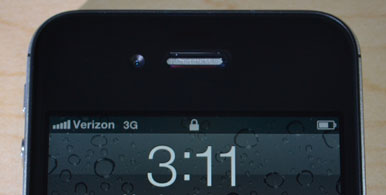 For such an eagerly anticipated product, the Verizon-compatible version of the iPhone 4 is awfully unassuming. With a few minor variations, it looks, feels, and works just like the AT&T iPhone 4 that’s been available for the past seven months. Of course, if you’re a loyal Verizon Wireless customer (or an AT&T customer who’s been desperate to switch carriers), the only change that matters is the big one: the network itself.
For such an eagerly anticipated product, the Verizon-compatible version of the iPhone 4 is awfully unassuming. With a few minor variations, it looks, feels, and works just like the AT&T iPhone 4 that’s been available for the past seven months. Of course, if you’re a loyal Verizon Wireless customer (or an AT&T customer who’s been desperate to switch carriers), the only change that matters is the big one: the network itself.



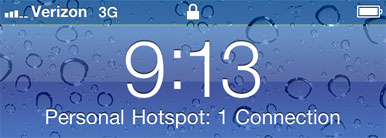 The CDMA version of the iPhone 4 ships with a new version of the iOS, 4.2.6. Presumably the software is full of modifications that allow the iOS to drive the new CDMA radio hardware, but the only noticeable change in features available to regular users is the introduction of the new
The CDMA version of the iPhone 4 ships with a new version of the iOS, 4.2.6. Presumably the software is full of modifications that allow the iOS to drive the new CDMA radio hardware, but the only noticeable change in features available to regular users is the introduction of the new  To enable Personal Hotspot for the first time, you’ll need to go to the Settings app and select General -> Network -> Personal Hotspot. (Once you’ve done that once, though, Personal Hotspot will show up at the top level of the Settings app for easy access.) Note that this isn’t a free feature, either—Verizon told Macworld that
To enable Personal Hotspot for the first time, you’ll need to go to the Settings app and select General -> Network -> Personal Hotspot. (Once you’ve done that once, though, Personal Hotspot will show up at the top level of the Settings app for easy access.) Note that this isn’t a free feature, either—Verizon told Macworld that 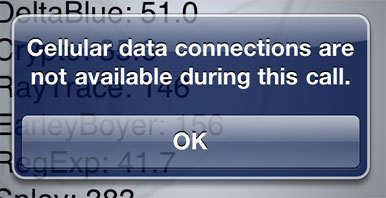 Adopting the CDMA cellular standard does force this iPhone 4 to take one step back—back to the days of the original iPhone, in fact. Unlike AT&T’s 3G network, which can transmit data and voice simultaneously, the Verizon 3G network can only do one or the other.
Adopting the CDMA cellular standard does force this iPhone 4 to take one step back—back to the days of the original iPhone, in fact. Unlike AT&T’s 3G network, which can transmit data and voice simultaneously, the Verizon 3G network can only do one or the other.
